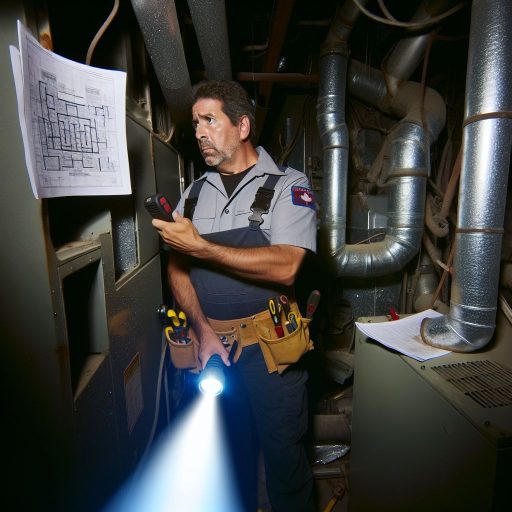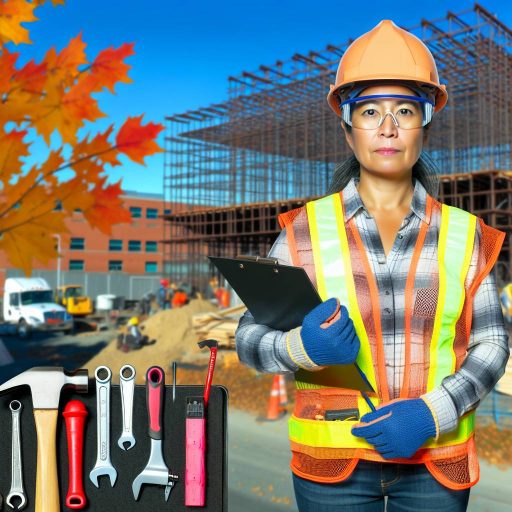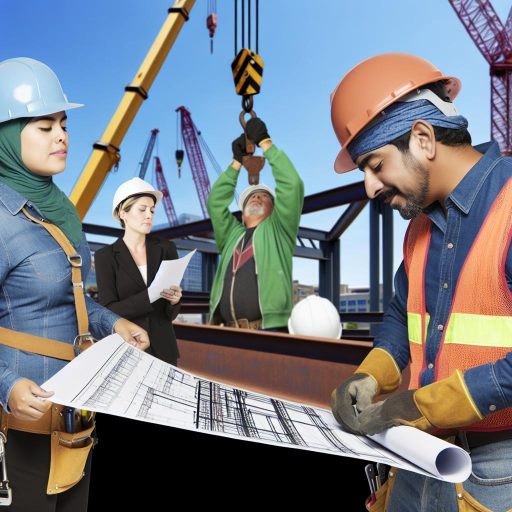Introduction to Green Roofing
Definition of Green Roofing
Green roofing refers to the practice of growing vegetation on rooftops.
It involves a waterproofing layer, a soil medium, and suitable plant selections.
Typically, these roofs can be extensive or intensive in nature.
Extensive green roofs have a shallow soil layer with minimal maintenance.
In contrast, intensive green roofs can support larger plants and require more care.
Benefits of Green Roofing
Green roofs provide numerous environmental benefits.
They contribute to improved air quality by absorbing pollutants.
Additionally, these roofs help in managing stormwater effectively.
They can significantly reduce urban heat island effects.
Moreover, green roofs insulate buildings, reducing energy costs.
Enhanced Aesthetic Appeal
Green roofing enhances the visual appeal of urban spaces.
Vibrant vegetation can transform dull rooftops into beautiful green landscapes.
Furthermore, these roofs can create recreational spaces for building occupants.
They offer a unique environment for leisure and gathering.
Increased Property Value
Installing a green roof can increase a property’s market value.
Potential buyers often view it as a valuable asset.
Sustainable features can attract environmentally-conscious clients.
Supporting Local Biodiversity
Green roofs serve as habitats for various species.
They support urban wildlife, including birds and insects.
This contributes to a healthier urban ecosystem overall.
Opportunities for Canadian Roofers
Canadian roofers can benefit significantly from the rise of green roofing.
They can acquire specialized training to meet growing demands.
Furthermore, offering green roofing services can distinguish businesses in a competitive market.
Additionally, government incentives may support the adoption of green roofs.
Roofers can also collaborate with landscape architects for integrated projects.
Unlock Your Career Potential
Visualize a clear path to success with our tailored Career Consulting service. Personalized insights in just 1-3 days.
Get StartedCurrent Trends in Green Roofing in Canada
Growing Popularity of Green Roofs
Green roofs are becoming increasingly popular in Canada.
This trend reflects a shift towards more sustainable building practices.
Urban areas, such as Toronto and Vancouver, lead in adopting green roofs.
Homeowners and businesses seek eco-friendly construction options.
Moreover, municipalities provide incentives to encourage these installations.
Environmental Benefits
Green roofs offer significant environmental benefits.
They help reduce urban heat islands by providing insulation.
This unique feature lowers energy costs for heating and cooling.
Additionally, they improve air quality by filtering pollutants.
They also manage stormwater effectively, reducing runoff.
Government Initiatives
The Canadian government supports green roofing initiatives.
Various programs promote the development of sustainable infrastructure.
For example, the City of Toronto’s Green Roof Bylaw mandates green roofs on certain buildings.
Incentives and grants encourage property owners to install green roofing systems.
These efforts aim to increase green space and biodiversity.
Technological Advancements
Technological advances facilitate the growth of green roofing in Canada.
New materials improve durability and ease of maintenance.
For instance, lightweight soil options reduce structural load on buildings.
Additionally, smart irrigation systems optimize water usage.
Such innovations enhance the benefits of green roofing systems.
Professional Development Opportunities
This trend presents new opportunities for Canadian roofers.
Roofers can specialize in installing green roofing systems.
Training programs educate workers on sustainable practices.
Furthermore, roofers can offer maintenance services for green roofs.
This specialization can lead to increased business and job prospects.
Environmental Impact of Green Roofs
Mitigation of Urban Heat Islands
Green roofs play a crucial role in reducing urban heat islands.
Urban heat islands refer to areas where temperatures are significantly higher than surrounding rural areas.
This phenomenon occurs due to extensive concrete, asphalt, and limited vegetation.
Green roofs help by providing natural insulation and cooling effects.
In addition, they absorb sunlight, preventing rooftops from overheating.
Studies indicate that green roofs can lower surrounding temperatures by up to 5 degrees Celsius.
This reduction significantly impacts energy consumption for cooling buildings.
As a result, cities can see decreased energy costs and lower greenhouse gas emissions.
Furthermore, cooler urban environments enhance outdoor comfort and air quality.
They can also increase biodiversity by providing habitat for various species.
Plant choices on green roofs attract pollinators, aiding local ecosystems.
Moreover, green roofs can effectively manage stormwater runoff.
They absorb rainfall and reduce the volume and speed of runoff.
This process mitigates the risk of flooding and erosion in urban areas.
Next, cities can implement policies promoting green roofs across urban landscapes.
Incentives for roofers can create a market for green roofing installations.
This approach not only addresses heat but contributes to sustainable urban development.
Gain More Insights: Effective Marketing Strategies for Upholstery Services
Economic Opportunities for Canadian Roofers in Green Roofing Installation
Growing Demand for Green Roofs
The demand for green roofs is rapidly increasing in Canada.
This growth stems from environmental and economic benefits.
Homeowners and businesses recognize the value of sustainable practices.
They are seeking ways to enhance their properties while benefiting the environment.
Financial Incentives for Roofers
Various financial incentives exist for businesses involved in green roofing.
Government grants and subsidies promote eco-friendly construction.
These incentives can significantly increase profit margins for roofers.
Market Differentiation Through Green Certification
Obtaining green certification can set roofers apart in a competitive market.
This certification builds credibility and trust with potential clients.
Moreover, it opens up opportunities for larger projects and partnerships.
Skills Development and Training Programs
Investing in training for green roofing techniques is crucial.
Roofers who specialize in this area can command higher fees.
Training programs are becoming widely available across Canada.
These programs enhance knowledge of sustainable practices and materials.
Potential for Long-Term Contracts
Green roofing installations often lead to long-term contracts for maintenance.
Roofers can establish ongoing relationships with commercial clients.
These contracts provide steady income and job security.
Collaboration with Other Industries
Roofers can collaborate with architects and urban planners.
This collaboration promotes more integrated and innovative designs.
Such partnerships can create holistic sustainable development projects.
Community Engagement and Awareness
Canadian roofers can engage with local communities to raise awareness.
Educational workshops can highlight the benefits of green roofing.
This engagement fosters a culture of sustainability in the community.
Environmental Sustainability as a Selling Point
Emphasizing environmental sustainability attracts more clients.
Many consumers prioritize eco-friendly choices when selecting services.
Promoting green roofing can enhance brand loyalty and attract new customers.
Learn More: How HVAC Technicians Ensure Indoor Air Quality
Technical Skills and Training Required for Green Roofing Installation
Understanding Green Roofing Systems
Green roofing involves layers of vegetation and can enhance building insulation.
It requires knowledge of the types of green roofs available.
Both extensive and intensive green roofs have different installation needs.
Necessary Technical Skills
Roofers must understand waterproofing techniques to prevent leaks.
They should be skilled in handling various materials used in green roofs.
Knowledge of soil types and plant selection is equally important.
Furthermore, roofers should be adept at integrating drainage systems.
Training and Education Options
Many institutions offer courses on green roofing techniques.
Hands-on training with experienced professionals enhances learning quality.
Additionally, certification programs can validate expertise in this field.
Health and Safety Training
Safety protocols are crucial in the installation process of green roofs.
Roofers must complete training on working at heights.
Understanding the use of personal protective equipment is essential.
Moreover, awareness of environmental regulations is vital.
Emerging Trends and Future Skills
As technology evolves, roofers need to stay updated on new methods.
Knowledge of sustainable practices will become increasingly important.
Additionally, continuing education can enhance skills over time.
Networking within industry associations can also provide valuable insights.
Uncover the Details: Tools Every Upholsterer Should Have in Their Toolbox

Government Incentives and Policies Supporting Green Roof Growth in Canada
Overview of Current Policies
The Canadian government actively supports green roofing initiatives.
Policies aim to reduce urban heat and improve air quality.
Local governments are also introducing regulations to promote green roofs.
These measures enhance urban resilience against climate change.
Financial Incentives for Rooftop Greenery
Many provinces provide financial incentives for green roofing projects.
Programs often include grants and tax rebates for installation costs.
For instance, Toronto offers funding through its Green Roof By-law.
Such programs aim to offset initial investment concerns.
Moreover, incentives encourage eco-friendly construction practices.
Environmental Benefits of Green Roofs
Green roofs offer substantial environmental benefits.
They help manage stormwater runoff effectively.
Additionally, they promote biodiversity in urban areas.
Green roofs can also lower urban temperatures.
This cooling effect contributes to energy savings in buildings.
Collaboration with Local Organizations
Governments collaborate with environmental organizations to promote green roofs.
Initiatives often include educational resources and workshops.
Organizations like the Canada Green Building Council support these efforts.
Such collaborations enhance community involvement and awareness.
Future Directions for Policy Development
Looking ahead, further policy advancements are necessary.
Governments should consider broader incentives across all provinces.
Policies must address the challenges of climate change effectively.
Lastly, sustaining momentum in green roof implementation is crucial.
Gain More Insights: How to Build a Successful Bricklaying Business
Case Studies: Successful Green Roof Projects Across Canadian Cities
Toronto’s Urban Oasis
Toronto boasts one of the largest green roofs in the country.
The Toronto-Dominion Centre features expansive greenery atop its skyscrapers.
This project enhances urban biodiversity and air quality.
Furthermore, it provides recreational spaces for residents.
Annual studies report significant reductions in energy use due to the green roofs.
Vancouver’s Sustainability Leadership
Vancouver has embraced green roofing as part of its sustainability initiatives.
The Vancouver Convention Centre showcases a prominent green roof.
This project features native plant species that thrive in the local climate.
Moreover, it captures rainwater, reducing stormwater runoff.
Civic engagement in the project led to increased public awareness of ecological practices.
Calgary’s Innovative Green Roof Program
Calgary initiated its green roof program to combat urban heat.
Local residents witnessed the transformation of rooftops into gardens.
One notable project includes the Bow River Pathway green roofs.
These roofs enhance the aesthetics of the pathway while promoting wildlife habitats.
Community workshops educate homeowners on sustainable gardening practices.
Montreal’s Green Roof Initiative
Montreal’s green roof initiative aims to improve urban living conditions.
The city encourages green roof installation through financial incentives.
One exciting example is the Espace pour la Vie, transforming urban spaces into green areas.
This initiative has increased biodiversity and supported local ecology.
Additionally, it provides educational opportunities for schools and local groups.
Ottawa’s Green Roof Adaptation
In Ottawa, green roofs are gaining traction among municipal buildings.
The City Hall green roof is a prominent example of eco-friendly architecture.
It contributes to urban cooling and aesthetic appeal.
Local government hosts events to promote green roofing technologies.
Public feedback demonstrates an increasing interest in such sustainable practices.
Future Prospects: Innovations in Green Roofing Technology and Materials
Emerging Technologies in Green Roofing
Recent advancements in technology drive the evolution of green roofing solutions.
One notable innovation is the development of lightweight growing media.
These materials enhance water retention while minimizing structural loads.
Additionally, smart irrigation systems optimize water usage efficiently.
These systems utilize sensors to monitor moisture levels actively.
Biological Innovations in Plant Selection
Research identifies plant species that thrive in diverse climates.
These species require less maintenance while providing aesthetic appeal.
Moreover, native plants support local wildlife and ecosystems.
Landscapers increasingly emphasize biodiversity in green roofing designs.
Recyclable and Sustainable Materials
Recycling plays a pivotal role in the future of roofing materials.
Manufacturers produce eco-friendly options from recycled materials.
For instance, roofing membranes made from post-consumer plastics are gaining popularity.
This approach reduces waste and lowers carbon footprints effectively.
Economic Benefits for Roofers
These innovations also generate new business opportunities for roofers.
Roofers can expand services by offering specialized green roofing installations.
Training programs exist to equip professionals with necessary skills.
Furthermore, government incentives encourage green roofing projects.
This funding can help homeowners offset installation costs significantly.
Regulatory Changes and Industry Standards
Regulations increasingly favor sustainable building practices.
Many municipalities enact codes that promote green roofing installations.
These rules create a more favorable market for green roofing specialists.
Compliance with industry standards fosters consumer trust and business growth.
Additional Resources
Plan for the Settlement of Jurisdictional Disputes in the Construction …




